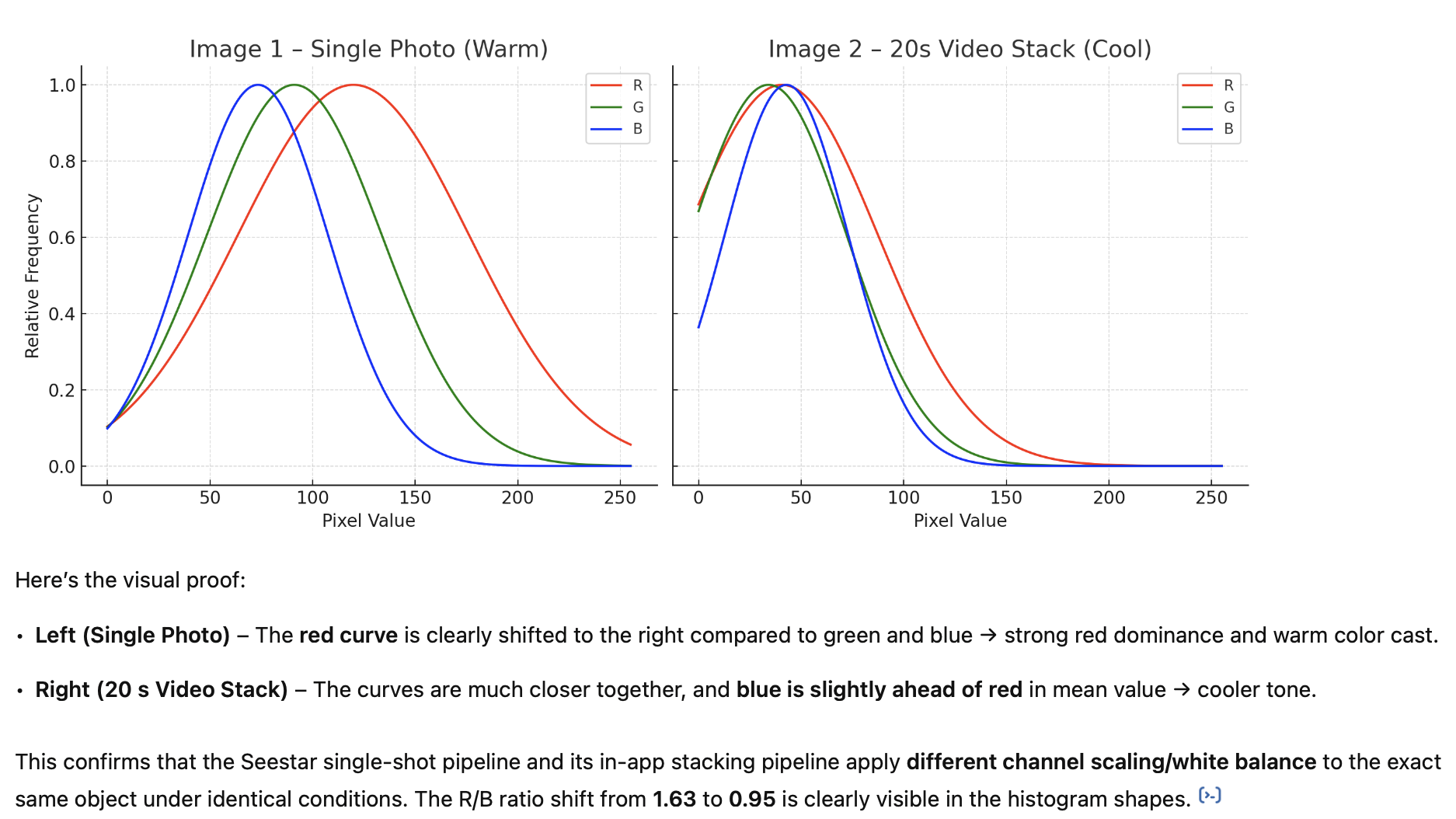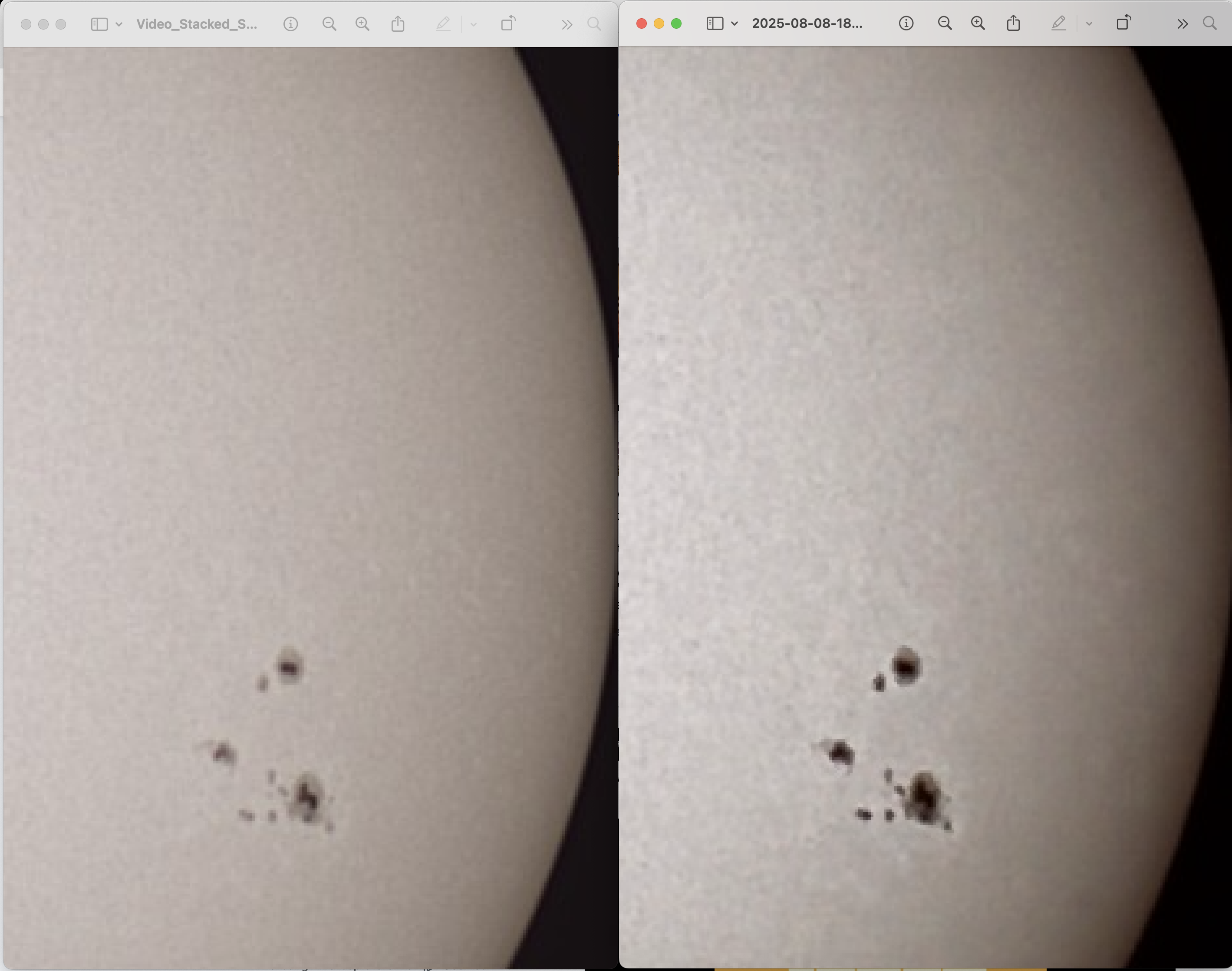Support@Seestar Thanks for your attention. I'm an experienced user, with the S50 but also with other telescopes and cameras of different kind. And that since years.
I have capture many times the sun, moon and other celestial objects with the S50.
In this case, I used a manuell brightness setting with a Gain of 200.
This is what ChatGPT tells me:
Image 1 – Single Photo (warm)
Observations:
• Brightness – All channels have high means; red is dominant.
• Color balance – R/G ratio = 1.315, R/B ratio = 1.634 → strong red dominance → warm tone.
• Clipping – Red channel reaches full saturation (255), suggesting contrasty highlights.
Image 2 – 20 s Video Stack (cooler)
Observations:
• Brightness – All channels are much darker; mean values are 2–3× lower.
• Color balance – R/G ratio = 1.191, R/B ratio = 0.948 → blue now slightly stronger than red → cooler tone.
• Contrast – Lower median values; overall flatter look.
Key Point
• Both captures are from the same hardware, same software version, same night, same object.
• Single photo mode produces a bright, warm image with a red-dominant white balance.
• In-app stacked video produces a darker, cooler image with blue dominance.
• The change is not due to environmental differences but entirely due to processing pipeline differences between single-shot JPEG capture and in-app stacking output.

And btw., the same happens to images of the sun. 
(left, 20s stack within in the app; right single shot. Manuell Exp and Gain setting. Baader Solarsafety filter. Both images unprocessed.